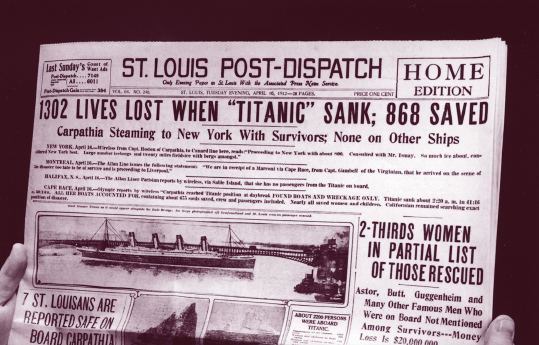Wireless Telephony: De Forest and Fessenden
“I discovered an Invisible Empire of the Air, intangible, yet solid as granite.”
LEE DE FOREST, INVENTOR
In 1899, inventor Lee De Forest (who, in defiance of other inventors, liked to call himself the “father of radio”) wrote the first Ph.D. dissertation on wireless technology, building on others’ innovations. In 1901, De Forest challenged Marconi, who was covering New York’s International Yacht Races for the Associated Press, by signing up to report the races for a rival news service. The competing transmitters jammed each other’s signals so badly, however, that officials ended up relaying information on the races in the traditional way—with flags and hand signals. The event exemplified a problem that would persist throughout radio’s early development: noise and interference from competition for the finite supply of radio frequencies.
In 1902, De Forest set up the Wireless Telephone Company to compete head-on with American Marconi, by then the leader in wireless communication. A major difference between Marconi and De Forest was the latter’s interest in wireless voice and music transmissions, later known as wireless telephony and, eventually, radio. Although sometimes an unscrupulous competitor (inventor Reginald Fessenden won a lawsuit against De Forest for using one of his patents without permission), De Forest went on to patent more than three hundred inventions.
De Forest’s biggest breakthrough was the development of the Audion, or triode, vacuum tube, which detected radio signals and then amplified them. De Forest’s improvements greatly increased listeners’ ability to hear dots and dashes and, later, speech and music on a receiver set. His modifications were essential to the development of voice transmission, long-distance radio, and television. In fact, the Audion vacuum tube, which powered radios until the arrival of transistors and solid-state circuits in the 1950s, is considered by many historians to be the beginning of modern electronics. But again, bitter competition taints De Forest’s legacy; although De Forest won a twenty-year court battle for the rights to the Audion patent, most engineers at the time agreed that Edwin Armstrong (who later developed FM radio) was the true inventor and disagreed with the U.S. Supreme Court’s 1934 decision on the case that favored De Forest.5
The credit for the first voice broadcast belongs to Canadian engineer Reginald Fessenden, formerly a chief chemist for Thomas Edison. Fessenden went to work for the U.S. Navy and eventually for General Electric (GE), where he played a central role in improving wireless signals. Both the navy and GE were interested in the potential for voice transmissions. On Christmas Eve in 1906, after GE built Fessenden a powerful transmitter, he gave his first public demonstration, sending a voice through the airwaves from his station at Brant Rock, Massachusetts. A radio historian describes what happened:

That night, ship operators and amateurs around Brant Rock heard the results: “someone speaking! … a woman’s voice rose in song. … Next someone was heard reading a poem.” Fessenden himself played “O Holy Night” on his violin. Though the fidelity was not all that it might be, listeners were captivated by the voices and notes they heard. No more would sounds be restricted to mere dots and dashes of the Morse code.6
Ship operators were astonished to hear voices rather than the familiar Morse code. (Some operators actually thought they were having a supernatural encounter.) This event showed that the wireless medium was moving from a point-to-point communication tool (wireless operator to wireless operator) toward a one-to-many communication tool. Broadcasting, once an agricultural term that referred to the process of casting seeds over a large area, would come to mean the transmission of radio waves (and, later, TV signals) to a broad public audience. Prior to radio broadcasting, wireless was considered a form of narrowcasting, or person-to-person communication, like the telegraph and telephone.
In 1910, De Forest transmitted a performance of Tosca by the Metropolitan Opera to friends in the New York area with wireless receivers. At this point in time, radio passed from the novelty stage to the entrepreneurial stage, where various practical uses would be tested before radio would launch as a mass medium.